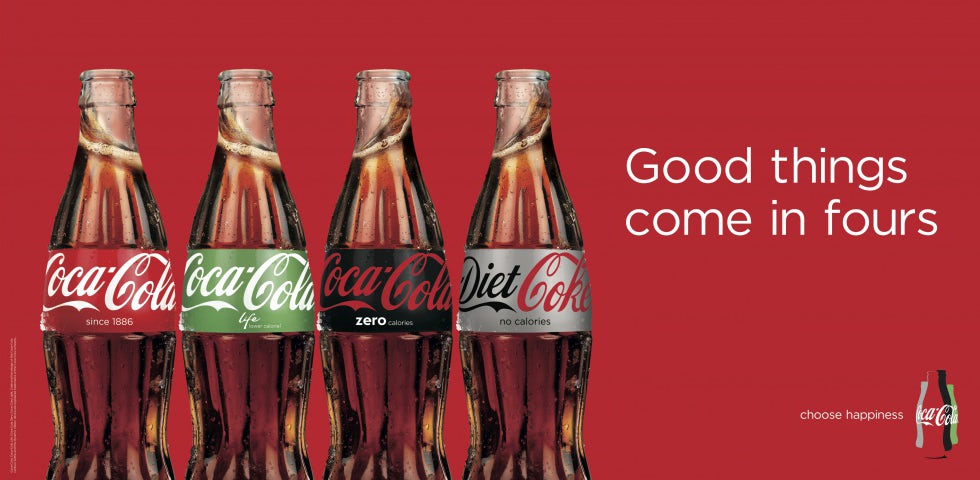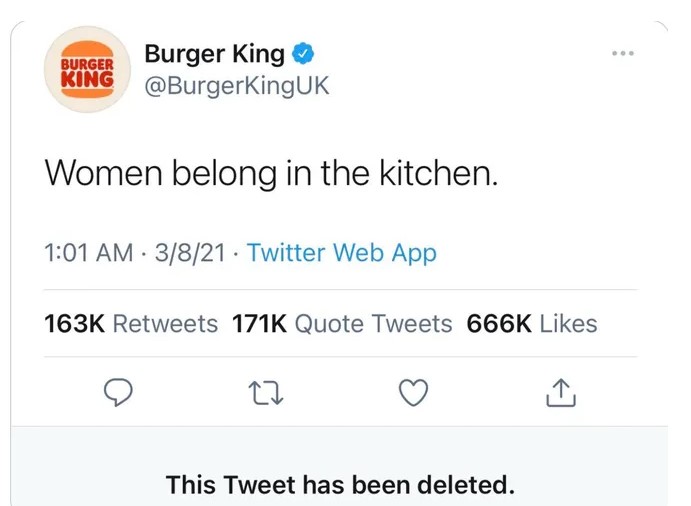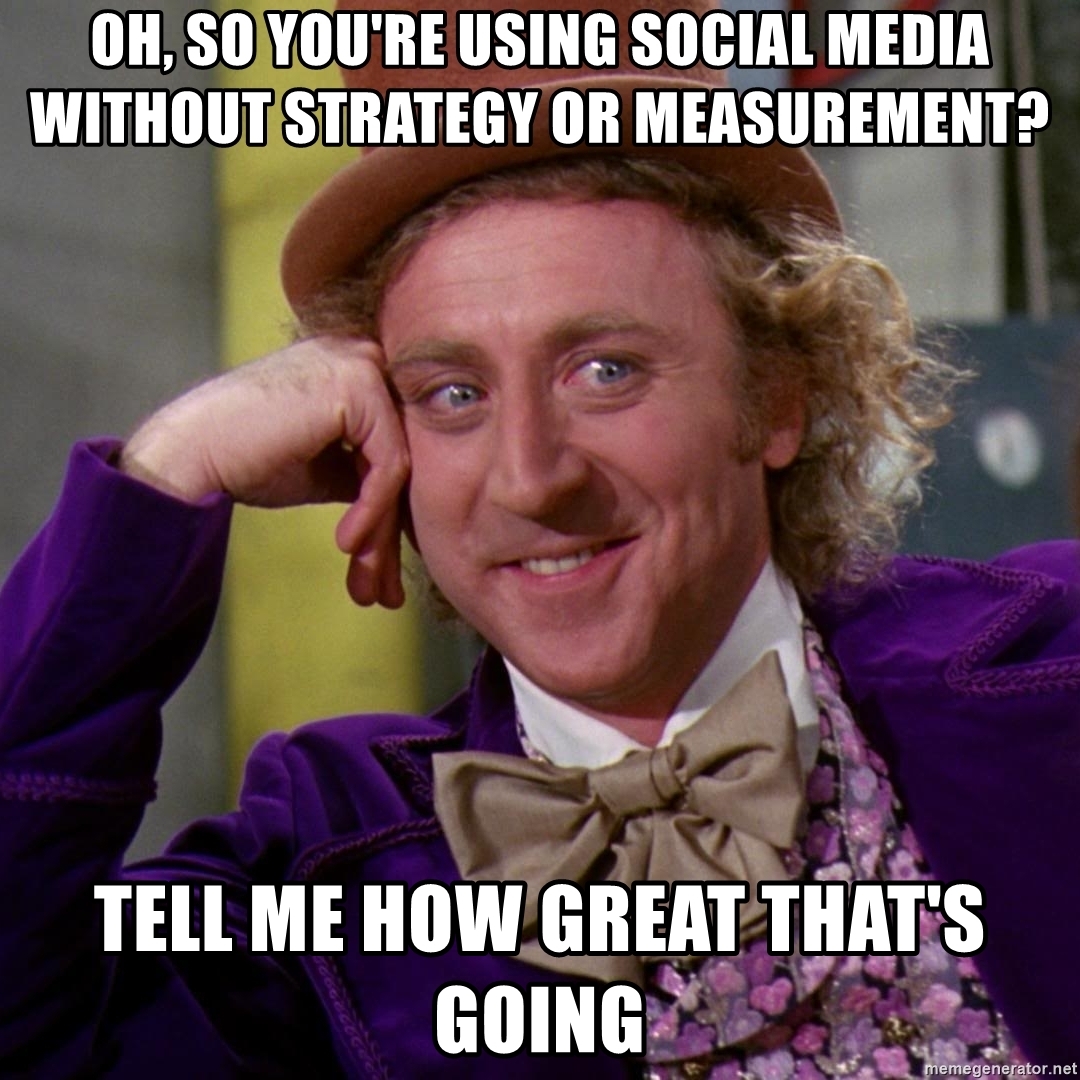Brand marketing and online branding have become critical elements for conquering the digital landscape.
Designing a strategic marketing road map has become necessary to understand the fundamental idea of branding.
Multiple brands have successfully demonstrated effective brand building and brand marketing strategies.

Apple stands out with its sleek design, innovative products, and consistent messaging that evokes sophistication and forward-thinking.

Coca-Cola’s timeless branding focuses on fostering emotional connections and spreading happiness through their refreshing beverages.
Let’s elaborate on the basic concepts and then we’ll move forward to the details.
What is a brand?

A brand is a business or company that sells a product or service and has positioned itself into a well-reputed business in the niche or market segment.
Plus, the brand identity and positioning in the users’ minds play a vital role in the establishment of any brand.
Brand Attributes
Brand attributes are the traits that reassure the brand values by implementing the core values of the brand.
Here are the most common brand attributes that shape brands’ perceptions:
- Relevancy: Brand relevancy means how relevant a brand’s approach is toward prospective customers. The target audience is key to getting noticed by the market segment.
- Consistency: Stick with your publishing or marketing regime, especially if it’s working out for you because consistency takes you ahead of your competition.
- Credibility: Credibility revolves around how a brand is perceived by people. Brands put a lot of effort into building brand reputation because being in the audience’s good books is essential for repeat clients.
- Positioning: Brand positioning is an attribute that showcases how a brand shapes its image in the customers’ and prospects’ minds.
Interesting read: Revamp Your Online Branding with Branded Short Links
Types of Brand Attributes
Brand attributes can be divided into two types:
i. Hard brand attributes: These are the properties involving visual appearance and tangible qualities. It includes logos, brand names, slogans, sign boards, mascots, etc.
ii. Soft brand attributes: These are the characteristic values of a brand in the customers’ minds. It includes uniqueness, trustworthiness, innovation, convenience, etc.
What is branding and why is it important?

Branding is a marketing buzzword widely used in the sales, marketing, and public relations departments.
Branding is a strategy to build a company’s identity and carve out an image in the end-users’ minds.
The purpose of branding is to create awareness and spread the word about the brand.
For instance, Nike is an American brand known for manufacturing athletic shoes, apparel, and sports equipment. Plus, they sponsor sports celebs and sporting events across the globe.
The reason we all recognize the “Nike” logo is that they have spent billions of dollars over the years on building their brand’s identity.
Branding encapsulates everything from creating the identity of a brand to shaping the perception through several tactics, such as:
- Choosing a brand name
- Creating a logo
- Making the branded stationery
- Designing the official merchandise
- Putting up the sign boards
- Printing the pamphlets
Benefits of branding
Here are some key benefits of branding to remember:
- Builds trustworthiness: Branding is crucial to building trust between a brand and the consumer base. A brand’s logo, name, slogan, and colors help develop recognition among the masses.
- Establishes brand positioning: Brand positioning is the image of a brand in the customers’ minds. Often brands’ are known for their high-quality products or low prices and such perks help shape their position in the end-users’ minds.
- Infuses brand loyalty: Branding sparks brand association that pulls the loyal customers and fan base toward their favorite brands. Brands understand the psychology of brand loyalty so they use branding to leverage that brand association in their marketing campaigns.
- Helps customer acquisition: Branding works as a channel to communicate, attract, and engage both existing and potential customers. Companies use all sorts of channels to promote their branding, for instance, giveaways, charity events, sponsorship, etc.
- Inspires purchase decisions: Since branding is all about creating awareness about a brand with direct and indirect brand promotion, it excites potential buyers and loyal fans to make a decision who are on the fence.
What is brand marketing?
Brand marketing is a process of establishing a connection between a brand and its users.
Brand marketing focuses on highlighting the effectiveness of a brand and how the entirety of the brand is important to the customers’ survival in the market.
Brand marketing doesn’t emphasize selling the product or service directly. Instead, it paves the way for building and growing a strong relationship with the end users.
Most brands opt for the traditional route and use digital marketing mediums like ads, email, and social media for product marketing. As a result, their goal gets tied with the transactional part of the communication.

Pepsi’s brand marketing strategy revolves around capturing the spirit of youth and pop culture. Pepsi’s online brand marketing efforts are a testament to their ability to connect with consumers in the digital sphere.
Pepsi employs branded URLs strategy to reinforce brand recognition and simplify online experiences. By using customized short links featuring their brand name, Pepsi ensures consistent branding across digital channels
What’s the difference between branding and marketing, and which comes first?
The main difference between branding and marketing is that branding brings recognition, identity, and positioning. Whereas, marketing gets brand attention, eyeballs, and engagement.
The branding vs. marketing debate isn’t worth it because both are essential from publicity and sales standpoints.
However, if you’re wondering which one comes first, it’s pretty clear that branding comes first.
For instance, if you launch an SEO agency, you’d start with a brand name, logo, domain, and website instead of hopping on Facebook to run Facebook ads.
What are the types of brand marketing?
There are several types of brand marketing, the below-mentioned three are the popular types of brand marketing:
i. Corporate brand marketing: It revolves around companies’ strategies to develop their reputation and build a connection with the audience through different means. These corporations often communicate their brand values through a mission statement, promotional offers, and press releases.
ii. Personal brand marketing: Personal brands are individuals who have managed to hone in on certain areas and dominate a small segment of the market. Social media influencers cash in on their personal brands. They use content distribution by leveraging social media platforms and amassing an audience which wants to listen to them.
iii. Product brand marketing: Product brand marketing is a process of branding a specific product by pouring all energies into it. In product brand marketing, brands often pick their best-performing product and try to put it on a pedestal to win the attention of the end users.
4 things to keep in mind when developing a brand marketing strategy
A branding marketing strategy doesn’t build on a whim – it always takes some time to put together a strong brand marketing plan.
Here are a few key elements to consider when developing a brand marketing strategy:
- Brand marketing is a long-term strategy. Don’t rush it. Otherwise, you might end up frustrated within a few weeks. It’s about building a brand’s identity based on the available resources, relationships, and communications.
- It takes time to reap the fruit. It’s not a short-term marketing strategy like an ads campaign that shows results at the end of the week, month or quarter.
- It is ongoing and can take many forms. It doesn’t only revolve around choosing a brand name, opting for a nice logo, and designing the brand’s stationery. In fact, brand marketing encompasses everything you do to establish your brand’s identity through collaborations, partnerships, sponsorship, giveaways, etc.
- The overarching goal of brand marketing is to grow the business, whether it’s done through building relationships with new prospects, attending seminars or industry meetups, or launching a content marketing plan to attract, engage, and convert the audience.
- An effective brand marketing strategy involves understanding different market attributes, including brand positioning, which is a critical aspect that helps shape how a brand is recognized. In Cincinnati, diverse techniques are blended to leverage brand presence and reach an amplified audience base. This modern approach includes collaboration with a leading Cincinnati marketing agency that inspires local and international brands by marrying traditional concepts with contemporary technology and creative executions.
How to build a strong brand marketing strategy?

Brands with strong business positioning in their industry often are the ones that build a branding strategy and follow it. Remember, it’s not a get-rich-quick scheme; branding is a real deal.
Here are 9 tips that can help you can build a strong brand marketing strategy:
1. Identify your brand marketing goals and vision
The first and foremost thing to do when building a strong brand marketing strategy is to identify the brand’s marketing goals. Every brand sets eyes on certain targets to achieve.
In order to build a powerful brand marketing strategy, start by envisioning the future. It doesn’t matter whether it’s gaining a significant market share or entering into a monopolistic market. Collaborating with a specialized marketing agency can provide valuable insights and expertise in reaching your branding goals.
Once the brand marketing goals have been set, it gets easier for the team to execute marketing and branding plans.
2. Develop your brand identity
The brand identity means what this brand stands for or is known for. These brands try to develop their brand identity to attract potential customers and social media audiences.
Interesting read: 8 Best Retargeting Platforms To Retarget Your Potential Audience
3. Raise brand awareness

When brands educate the audience about their belief system, they basically share what they believe in to spread brand awareness. Almost every brand tries to position itself as culturally diverse, with no tolerance for racism, and gender equality.
4. Build brand loyalty
To create a strong brand marketing structure, it’s vital to have brand loyalty on the customers’ part. Brands pay close attention to the ideas that help them earn brand loyalty from customers.
Once these things sort out, building a brand identity seems like a piece of cake.
5. Research target market
Understanding the target market and the challenges that might arise is crucial to establishing a solid brand marketing strategy.
Researching the target market means analyzing the market segment you’re about to enter to help bring clarity to the process.
Brands often turn a blind eye to the competition, which is a big mistake. There may have been a couple of reasons: the first is that they overrate themselves right at the beginning of the journey and the second is that they think competitors won’t notice them, so they don’t consider their competitors a threat just yet. Understanding your target market also helps shape your content, SEO, and advertising strategies to match customer expectations. For businesses looking to scale without building an in-house team, partnering with the best white label SEO service can streamline audience targeting and ensure consistent, high-quality search visibility.
There are two factors to consider when considering research on the target market for building a brand marketing plan:
- Narrow in on the target audience: Zooming in on the right segment of the audience would take you closer to the target audience. This is exactly what every brand dreams of when entering the market.
- Know your competition: Always keep an eye on the competition. Every brand that is crushing on social media or SEO always knows about its competition. They closely follow their content strategy, social media content distribution, SEO tactics, and more. So don’t sleep on this opportunity either.
The target market research would take you ahead of many competitors who don’t care much about understanding the competition or haven’t had a chance to learn more on this topic.
Interesting read: A Quick Guide to Building Custom Audiences through URL Tracking
6. Determine your brand marketing tactics
One of the important steps when building a brand marketing strategy is to determine what route to take to get to the destination. The decisions such as color schemes, blog content style, social media content strategies, and other strategies fall into this category.
Clarifying the brand marketing tactics would provide the team with a roadmap to follow and help develop a system to save time in the future.
However, there are always some inside secrets that only team members know and these secrets aren’t supposed to get out. The reason is that competitors spy on you the way you keep an eye on them.
The keys to remember when determining the brand marketing tactics are:
- Develop brand marketing collateral: Branding marketing requires a set of tools and resources. Developing an arsenal whether it’s a PDF outline or a list of online tool subscriptions – this would come in handy for the team.
- Outline a messaging strategy: The message-driven content always does better than vague and pointless content. Make sure that the content is sending out a clear, concise message to the chosen audience.
- Define messaging and positioning: It’s necessary to communicate to see that everyone is on the same page. The team must be crystal clear about the brand position. Don’t shy away from explaining the brand message to the team to ensure that every individual team member knows about it.
7. Rollout a timeline
Rolling out a timeline means allocating a time window to a specific project or campaign. Brands always set a timeline whether they’re hiring a new freelancer or opting for a new URL shortener.
It’s best to set a timeline for a campaign to analyze its performance and effectiveness at the end. Brands usually choose monthly, quarterly, biannual, and annual timelines for their campaigns.
When you’re building a brand marketing strategy, don’t hesitate to choose a time frame for the strategy. The reason why it matters is that it helps brands measure the performance of the campaign afterward.
8. Create a consistent brand image
One of the goals of establishing a strong brand marketing strategy is to come up with a consistent brand image. A brand image means building a positive brand reputation among customers.

Burger King UK faced backlash for tweeting ‘Women belong in the kitchen’ on International Women’s Day. The tweet was criticized for its insensitive and derogatory language, which undermined the significance of the day and perpetuated harmful stereotypes about women. Many people expressed their disappointment and called out the fast-food chain for the inappropriate message. Burger King later issued an apology and acknowledged the need to deliver a more respectful and inclusive message.
This example shows why it is crucial for companies to recognize the importance of fostering an inclusive and supportive environment both online and offline. Small gestures, like providing personalized office items such as custom paperweights, can also contribute to creating a more welcoming and cohesive workspace.

The brand position or image doesn’t establish overnight; it takes forever to establish a brand in the eyes of the audience. It requires continuous effort and a dedicated plan to pull this off.
Brands that successfully establish their reputation and goodwill try to continue that momentum and live up to the customers’ expectations. No wonder they build this brand position and image over the course of several years.
Therefore, it’s vital to make efforts to create a consistent brand image through actions, offerings, customer support, high-quality products/services, and pricing to build and maintain a strong brand reputation.
9. Measure the success of your brand

No one wants their successful strategies to go unnoticed because otherwise they wouldn’t realize what worked for them and might as well try something new.
Therefore, the success measurement of the brand marketing campaign is crucial to the whole process.
In order to get disciplined about measuring the success of the branding strategies, keep the following tactics in mind:
- Create brand guidelines: Don’t sleep on setting the ground rules for everyone to follow. It could be anything from choosing the best time to post on TikTok to using a specific font for social media image copies.
- Make sure your product delivers on your promise: The product or service has to be top-notch to fulfill the promise. Otherwise, your marketing tactics would fall flat.
The question you might ask is how someone could measure the success of their brand marketing strategy.
Well, there are several indicators that might give you an idea of how well or badly your brand marketing campaign has performed over the course of the campaign, such as:
- The number of email inquiries received
- The number of social media followers increased
- The percentage of social media engagement increased
- The percentage of website bounce rate decreased
- The change in the digital marketing ROI
These indicators may vary from brand to brand. I won’t be surprised if some brand would go further down the rabbit hole and analyze numerous other factors to measure the success of their branding campaign.
Interesting read:15 Proven Facebook SEO Techniques To Increase Brand Visibility
How to use social media to market your brand successfully?

Social media has become an important part of the marketing arsenal. No individual or brand could think of marketing a brand without using social media.
The reason why social media is inevitable in marketing is because it has the attention of the masses. Now social media platforms have over 1 billion monthly active users.
So, you might wonder how you can use social media to market your brand without breaking the bank. Well, I have a handful of tips that would help you cash in on the social media real estate:
- Create a community of like-minded people: Don’t shy away from starting something from scratch. Build a community of true fans or like-minded people using a Facebook group discord channel or any other similar tool.
- Put out compelling, helpful content: Publishing high-quality, effective, and useful content is your ticket to engagement, attention, and eyeballs. Social media ads won’t cut it for most people, so use content marketing as a great alternative to advertising.
- Build a strong relationship with the audience: Building a healthy, strong relationship with your audience means you care what they want to know or learn. Provide them with efficient customer support and help them out by going out of the way – it will make a difference in the long term.
- Show up consistently on social media platforms: One of the best strategies to market a brand on social media is to consistently show up on social media platforms. You could always use a social media scheduling tool like ContentStudio to schedule your posts for the future.
- Use promotional strategies to spice things up: Most brands only focus on once-a-year discounts. However, if you’re a B2C company, then use giveaways, discounts, and promotional offers throughout the year to strengthen the relationship with the audience. Don’t shy away from giving away free brand merch or arranging meet-ups with customers or fans.
FAQs
Let’s answer some of the burning questions about brand marketing:
i. What is the marketing of a brand?
Marketing a brand means putting the brand in front of the prospective audience and establishing an image of the brand.
ii. What are the four branding strategies?
Here are four of the essential branding strategies to follow”
1) Start with finding your brand’s mission.
2) Identify the target market to enter.
3) Build your brand’s image.
4) Measure the outcome of the branding campaign.
iii. What are the benefits of using a marketing strategy for a brand?
- Provides clear direction
- Targets the audience
- Increases brand awareness
- Establishes brand recognition
- Defines a unique brand identity
- Engages and fosters customer loyalty
- Maximizes ROI
- Drives business growth
iv. Which is better: marketing or advertising for brands?
There is no right or wrong answer for this one. It depends on the industry, company’s type, growth hacks being followed, and tactics that have worked – most brands tend to use both and put more energy into whatever works for them.
v. When is brand marketing most successful?
Brand marketing is most successful when it effectively communicates a compelling brand story, resonates with the target audience, and drives positive brand perception, loyalty, and engagement.
vi. What should be included in a good marketing plan for my brand?
The common tactics for establishing a solid marketing plan must include clarity of the brand’s offering, effective communication, and a powerful analytical mechanism to measure the outcome.
You may also like:
Unique URLs: What They Are and How to Use Them?
Tips and Tricks From Some of the Best Personal Brands Around
Using Vanity URLs for Social Brand Awareness
































